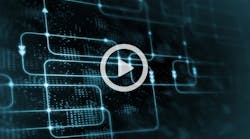$50M Resource Recovery Facility Planned for Hawaii
Recycling Today Staff MARCH 16, 2015 BioEnergy Hawaii LLC (BEH) a designer, developer and operator of waste treatment and alternative energy systems, has announced plans for a fully integrated resource recovery facility to be located on the west side of Hawaii Island, Hawaii. The $50 million facility will incorporate state-of-the-art material handling equipment and energy conversion technology to substantially reduce the amount of waste currently going directly into the landfill, the company says.
According to BEH, the West Hawaii facility will be financed with private equity. The project has the support of a $100 million special purpose revenue bond issued by the State of Hawaii. The project will be located near the Puuanahulu landfill, with the exact location of the facility to be announced when lease negotiations are finalized.
BioEnergy Hawaii is the long-term vision of Kosti Shirvanian, president of Pacific Waste Inc., the parent company of BEH. “We have lived and worked on the Big Island for almost 20 years; and as members of the community we all share a responsibility to care for the land,” says Shirvanian. “This project will transform our waste into a resource and make a positive contribution to our community and our environment.”
The project will accept municipal solid waste (MSW) delivered by local waste collection companies and will divert 70 percent of incoming waste from the West Hawaii Sanitary Landfill, BEH reports.
“We believe this project will meet Mayor Billy Kenoi’s goal of extending the life of the county’s landfills by diverting more waste and the joint goal of protecting the aina (Hawaiian for land),” says Guy Kaniho, BEH general manager.
The project will establish advanced recycling operations and produce multiple value products from the incoming waste. In order to maximize the diversion rate, the facility design integrates the recovery of three separate value streams: recyclable commodities, organics and solid fuel.
The recyclable materials, which would have been buried in the landfill, will be recovered and directed into the local recycling commodity market. The wet organic waste, such as food and green waste, will be treated through an anaerobic digestion (AD) process to stabilize the material and produce a nutrient rich natural fertilizer and high-quality compost. The AD operations will also recover an energy rich biogas-a flexible fuel source that can be used to generate electricity, be upgraded to pipeline quality renewable natural gas (RNG), or compressed to create an alternative transportation fuel (known as bio-CNG). The residual solid fuel portion-items not suitable for use in the anaerobic digester such as mixed paper, textiles, low-value plastic and wood-will be processed into a post-recycled engineered fuel-a dry, light material suitable for thermal energy conversion operations.
BEH plans to establish “closed-loop” waste recovery operations by encouraging local haulers to convert their waste collection vehicles to utilize the locally sourced bio-CNG. The fleet conversions will stabilize the waste hauler’s long-term fuel costs and allow them to utilize the lowcarbon renewable biofuel and reduce the island’s dependency on imported fossil fuels.
Incoming waste will be handled and processed in an enclosed building to ensure dust and odor control, the company says. The waste will be separated and sorted through a combination of automated and manual recovery methods. Materials that cannot be recycled or processed into renewable fuel, fertilizer and compost-about 30 percent of the total volume-will be delivered to the Puuanahulu Landfill.
“Given our Island’s limited land area and fresh water resources,” says Kaniho, “recycling and waste diversion is a priority, as it is in much of the industrialized world.”
The goals of BEH are to divert the waste from traditional landfill disposal, preserve the environment, create local jobs, and make valuable products to circulate into the marketplace. “BioEnergy Hawaii has an experienced development team in place with a strong commitment to the community,” says Kaniho. “We use superior technologies, have solid financing and employ smart logistics to accomplish BEH’s goals.”
The BEH resource recovery facility is designed to address the challenges of waste disposal operations in Hawaii and to provide sustainable resource management solutions. The project is in alignment with current governmental goals and waste industry directives. BEH believes diverting the waste stream to create recycled energy value out of recovered material is a priority as it will benefit the community, preserve the environment and spur long-term economic growth.
Construction on the BioEnergy Hawaii facility is scheduled to begin during the summer of 2016, the company says.
More information on the project and BEH is available at www.bioenergyhawaii.com

